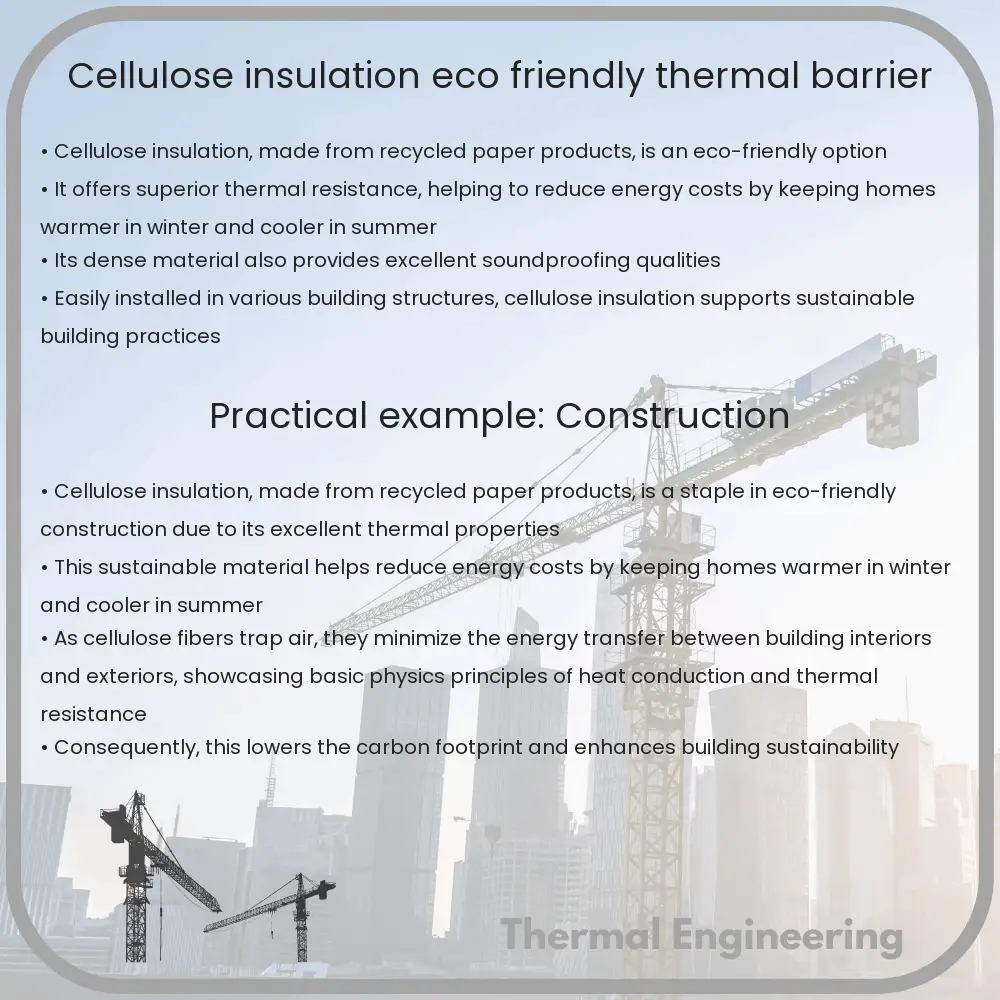Learn about cellulose insulation, an eco-friendly option providing thermal and acoustic benefits for sustainable building practices.

Understanding Cellulose Insulation: An Eco-Friendly, Thermal Barrier
Cellulose insulation represents a significant step forward in both sustainable building materials and energy-efficient home design. It is primarily made from recycled paper, such as newspapers, and other cellulose fibers, making it an environmentally preferable option in building insulation. Beyond its green credentials, cellulose insulation provides effective heat retention and helps reduce heating and cooling costs. This article explores the properties, benefits, and applications of cellulose insulation.
The Eco-Friendly Nature of Cellulose Insulation
Cellulose insulation is typically composed of up to 85% recycled paper fiber. The remaining 15% consists of a fire retardant such as boric acid or ammonium sulphate. This high recycled content contributes positively to its environmental profile by diverting waste from landfills and reducing the need for virgin materials. The process of producing cellulose insulation also requires less energy compared to fiberglass insulation, another common form of building insulation.
Thermal Performance and Energy Efficiency
The primary function of any insulation material is to resist the flow of heat. Cellulose insulation achieves this effectively with its density and compact fiber structure, which traps air and reduces the movement of heat through walls, ceilings, and floors. The thermal resistance of insulation is measured in R-values—the higher the R-value, the better the insulation’s effectiveness. Average R-values for cellulose insulation generally range between R-3.2 and R-3.8 per inch.
Cellulose insulation not only reduces energy costs by improving a building’s thermal envelope but also provides better soundproofing compared to many other insulation materials, adding a layer of acoustic comfort to its benefits.
Installation and Application
Installing cellulose insulation can be done in various ways, including:
- Loose-fill: Often used in attics, it’s blown into place using special equipment.
- Dense-packed: Ideal for walls and closed cavities, cellulose is densely packed to prevent settling and decrease air infiltration.
- Sprayed or damp-spray: In this method cellulose is mixed with a small amount of water and sprayed, this helps the insulation adhere to surfaces and fill crevices more effectively.
Regardless of the method, installation should always be carried out by professionals to ensure maximum effectiveness and adherence to local building codes.
Sustainability Benefits Beyond Insulation
One of the standout features of cellulose insulation is its low environmental impact, not only in terms of raw materials usage but also in its lifecycle impact. Its production emits less greenhouse gases compared to most other insulation types. Furthermore, the borate treatment given to cellulose provides resistance against pests, fungi, and fire, enhancing the durability and safety of the insulation without significant ecological compromises.
Conclusion
Cellulose insulation offers a multitude of benefits making it an attractive choice for new constructions and retrofitting projects alike. Its impressive thermal properties, sound dampening capabilities, and high recycled content make it a standout in the world of sustainable building materials. By choosing cellulose insulation, property owners can reduce energy costs, contribute to environmental conservation, and enjoy a comfortable internal environment. The installation of this material not only preserves natural resources but also supports the recycling industry, featuring a compounding effect on its ecological benefits.
As the world moves towards more sustainable building practices, the role of materials like cellulose insulation becomes ever more crucial. It exemplifies how engineered solutions can bridge the gap between environmental stewardship and economic performance.